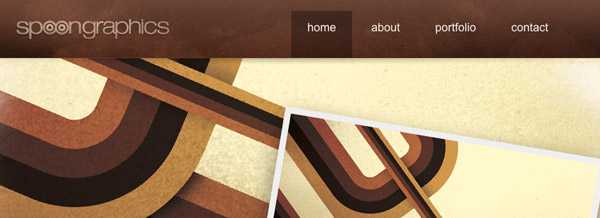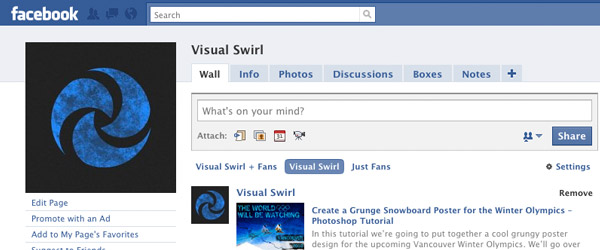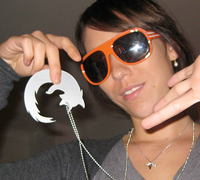Credibility on the web is not easily earned. To be a successful designer, you need people to recognize you as skilled, competent and professional. When someone needs something designed they turn to you because you’ve proven yourself to them as capable and reliable. That’s web cred! Once you’ve established yourself, life as a designer starts to get easier. Clients will start rolling in and your days of spec work and begging for projects will be over. Getting to that point, however, is no easy task. Being recognized by your peers and potential/current clients as an authority on design takes a lot of hard work, time and often luck. Here are some tips to put your name out there and earn some legitimate Web Cred.
Do Work
If you want to be a capable designer you’ve got to prove yourself capable. There’s no better way then to get out there and Do Work Son! If all you do is read blogs about design and never design anything, what good does that do you? Your head may be full of knowledge but if you have nothing to show for it, have you really gained anything? So quit spending all your time reading (except for this blog) and go out and design something.

Source:lensbug.chandru
If you’re just starting out, you can’t be picky when it comes to the projects you take on. If you run across an opportunity to add some designs to your portfolio, take the chance. That’s not to say that you need to do work for free. Establish yourself as a professional early by charging for your work. You don’t want your clients thinking you’re a pushover who can be manipulated into minimum wage labor. At the same time, you can’t expect the big bucks right away either. But as you grow and as your designs improve, your credibility will be taken to another level.
Setup Shop
A web presence for designers is an absolute must. You don’t need all the bells and whistles, just a simple web presence to let people know that you’re legit. Make sure you get the best web host with less down time. A friendly, clean design with a sample of your work, your skills/services, and information on how to contact you is all you need to get rolling. Take the time to set it up right so that when someone does land on your site, they feel like they can trust you with their business. This will be the foundation on which the rest of your web cred will be built.

Chris Spooner of SpoonGraphics has a professional yet creative portfolio site.
Elements that your portfolio site should include:
- A list of services you offer
- Contact page including multiple ways of contacting you (form, email, twitter, phone, etc.)
- A little bit about who you are and maybe how you design
- Good samples of your work (duh!)
Perfect Your Profiles
After you’ve established a working portfolio and setup a decent looking site, it’s time to take to the streets and put your face out there. Everyone and their mother (and even their grandmother) is on the social media sites these days. You’ve probably already got a facebook and/or twitter account that you use for stalking and sharing your lunch choices. To step up your web cred, establish professional profiles on all the social networks.

For Twitter, setup an account with the sole purpose of building credibility and networking. Fill out all the appropriate profile fields (name, location, bio, image, and background). Use this as a networking tool to meet designers, clients, and anyone else who may be interested in what you do. There are tons of articles on how you should and shouldn’t use a twitter account but basically treat it like a conversation. Don’t always talk about yourself. Don’t yell and repeat yourself over and over. And limit the references to what you’re going to have for lunch. That’s not relevant to your Web Cred.
Continuing on, setup a Facebook page and share some of your designs and thoughts there. Put a professional resume up on Linkedin or other professional social media sites. You can even sign up for a YouTube or a Vimeo account if you’ve got videos of your designs to share. In all of this, the main point is to get your face out there. Be findable on all the social media sites so that when someone looks you up, they know instantly what you do and how well you do it.
Get Your Face Out There
Here we’re continuing the theme of getting your face out there and driving traffic to your portfolio. Write articles for design blogs (like this one). Create freebies that can be distributed around the web. Become active on social voting sites, such as Digg, Design Bump or Design Float. Comment on design blogs and become a voice in the design community. All of these are great ways to plug your name on in cyberspace and ultimately bring traffic and credibility back into your court.
You can even start building your Web Cred offline. Plug your website whenever appropriate. Include your Twitter handle on your business card. Tell your friends and family to spread the word about your online presence. Basically, however you can, drive people to your sites and profiles online. The more exposure they have to you and your brand, the more of an authority you’ll become in their mind.
Respond to Criticism the Right Way
Inevitably someone will not like something about you. Maybe they don’t think your work is up to par or they dislike the way you run your business. It’s only a matter of time before someone tries to drag your name, and your reputation you’ve worked so hard to build, through the mud. How you respond will speak a lot about your character and can turn bad situations into cred-building opportunities.

Keep your cool and respond the right way
Answer your criticisms quickly and politely. There’s no need to get into a social media yell-fest so don’t stoop to the level of name calling and finger pointing. Take blame where blame is due and fess up to your mistakes. Modesty and humility can help turn a bad situation into a something that actually works in your favor. If customers see that you care about your reputation, they’ll be glad to bring more business your way, even with the occasional bump in the road.
Pay Your Dues
Again, there’s no magic formula to make it to the top. Hard work and patience will pay off in your cred-building activities. Establishing yourself as design authority can be a slow process. Just roll up your sleeves, put the pedal to the metal, get your game face on and do other cliche things that mention getting to work. It’s the work now that will payoff when you’re rolling deep with your Web Cred. And one more thing…Enjoy the journey!
How Do You Build Web Cred?
What are some other ways that you’ve expanded your presence on the web? What is the hardest part about getting your work out there? If you’ve already got Web Cred, how do you plan on maintaining it? Let me hear your questions, thoughts, and web-cred-building strategies in the comment section below.
Want More? Subscribe and We'll Deliver it to You.

 Subscribe to the RSS feed or to email updates, to get even more great content!
Subscribe to the RSS feed or to email updates, to get even more great content!












